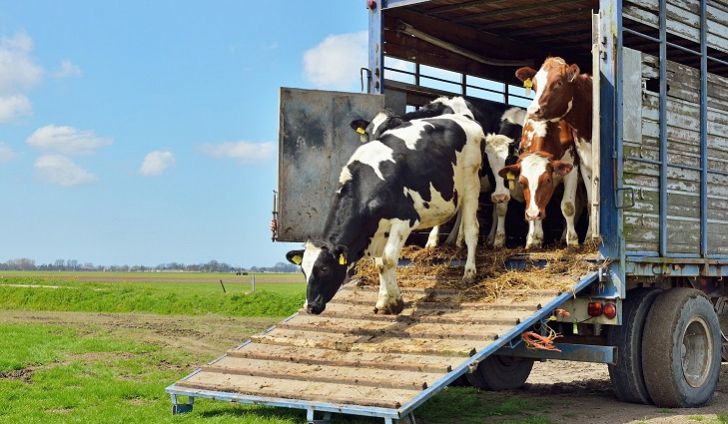As a farmer you have a legal responsibility to ensure your animals are transported in a way that won’t cause them any harm or unnecessary injuries. There are legal responsibilities in place to protect the livestock during transit. The rules in place vary depending on the distance and duration of the transportation taking place. It is also dependant on the species of the animals involved.
When the transportation of animals is taking place, the European law that governs the welfare of animals applies to anyone who transports live, vertebrate animals in connection with a business or trade, these include:
- Farmers
- Livestock and equine hauliers
- Commercial pet breeders
- And markets
Although the EU rules apply to all live vertebrate animals which are transported for economic reasons, tougher elements apply to the transportation of farmed livestock.
Farmed livestock can include:
- Pigs
- Goats
- Sheep
- Cattle
- Domestic equidae- i.e. ponies, horses, donkeys
- Poultry- i.e. ducks, geese, turkeys and pheasants.
To ensure you are in line with the law when planning the transportation of your animals, always plan your journeys thoroughly and where possible keep the duration to a minimum. All animals should be fit for the journey and should be checked on regularly.

To avoid any injuries and suffering, it is paramount that suitable loading and unloading facilities are maintained and constructed when transporting animals. Food and drink should be provided and at hand for the journey. The vehicle for the transportation will need sufficient space for the animals and height allowance taken into consideration.
Animal transporters must be competent in handling animals and mustn’t use any methods which would be likely to cause injury, fear or suffering to them.
There are certain laws in place for transporting animals that are considered unfit for travel. These include:
- Very young animals, eg calves that are less than 10 days old, or pigs that are less than 3 weeks old
- If a journey is longer than 8 hours long, calves must be over 14 days old
- Unless accompanied by their mother, no puppies or kittens less than 8 weeks old
- New born mammals whose navel hasn’t completely healed
- Females who have given birth in the past 7 days
- Sick or injured animals where moving them would cause additional suffering
If a journey is 8 hours or more and involves transporting cattle, sheep, goats or pigs, a vehicle inspection and approval is a legal requirement. These journeys also require the vehicle to be equipped with a satellite navigation tracking system. The purpose of these systems is so that enforcement officers can check the planned journey and accurate and legal.
The legal obligation of protecting livestock from any unnecessary suffering includes extreme temperatures. All farm animals should have adequate shelter and protection. Emergency contingency plans should be in place for each journey.
High temperatures can pose a major threat to the welfare of animals. Especially when conditions change suddenly. Ensuring animals have access to shade and water in vital, also making sure you regularly check on them
Mark Ender
